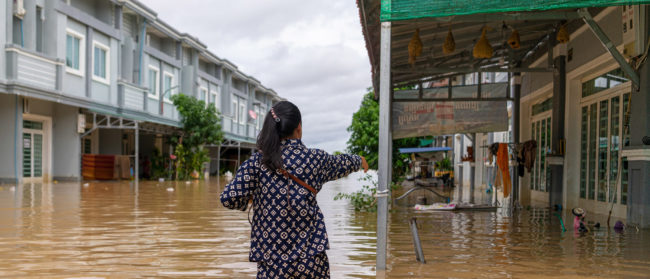As the chisels of Berliners chipped away at the concrete divide severing their city, the first panels of the Berlin Wall began to tumble down on November 9, 1989.
The German city was reunited and the tumbling of brick and mortar signalled the symbolic beginning of the end for the fraught Cold War that had raged – in stagnation – between the US and the Soviet Union for four decades. Walls had been brought down and a city divided was now united.
The fragments of the wall that weren’t demolished were either donated or sold – scattering pieces across the world to locations ranging from Vatican City to Sydney.
In Southeast Asia, fragments can today be seen at Kartilya ng Katipunan Monument in Manilla and the National University of Singapore, where the pieces were given on a five-year loan in 2016 to mark 50 years of diplomatic relations between the city-state and Germany.
But the final, and perhaps most unlikely, location for remnants of the Iron Curtain can be found in a park located in the former redlight district of the Indoesian capital Jakarta.
In Kalijodo Park stands artist Teguh Ostenrik’s Patung Menembus Batas installation, roughly translating as A Statue Crossing Boundaries. Four pieces of the wall, each standing at about 3.5 metres tall and over a metre wide, have stood proudly in the park since 2017 – not as a reminder of the political division from which they were erected, but, Ostenrik hopes, a prompt to openness.
“We have to make an effort to transcend these borders and walls that exist in society,” Ostenrik told the Globe. “This is the reason why I wanted to bring a part of the Berlin Wall – to have a symbol that says: ‘we still have an obligation to bring down the walls that exist within our own nation’.”
For Ostenrik, the installation holds more than just artistic value. As a young artist he studied in West Berlin for six years during the lead up to 1989, while the country and capital was divided between communist East and capitalist West. “As an artist, it was quite a creative time and I’m thankful to have been and studied there,” he said.
Allowed to freely move between the two sides of the city, Ostenrik had friends he would visit in the East – bringing them jeans and jackets from the West, buying paint for his work on the other side. “I had some very good contacts with some families and friends in the East, and I was helping them to bring jeans,” Ostenrik said. “I would even bring new pairs of stockings for a friend’s mother!”
“My friends would get me oil colors from East Berlin – the quality was the same, but it was much cheaper than in West Berlin,” said Ostenrik, recalling the stark contrast between the capitalist West and the communist East. “It was clear – the capitalist-communist divide.”
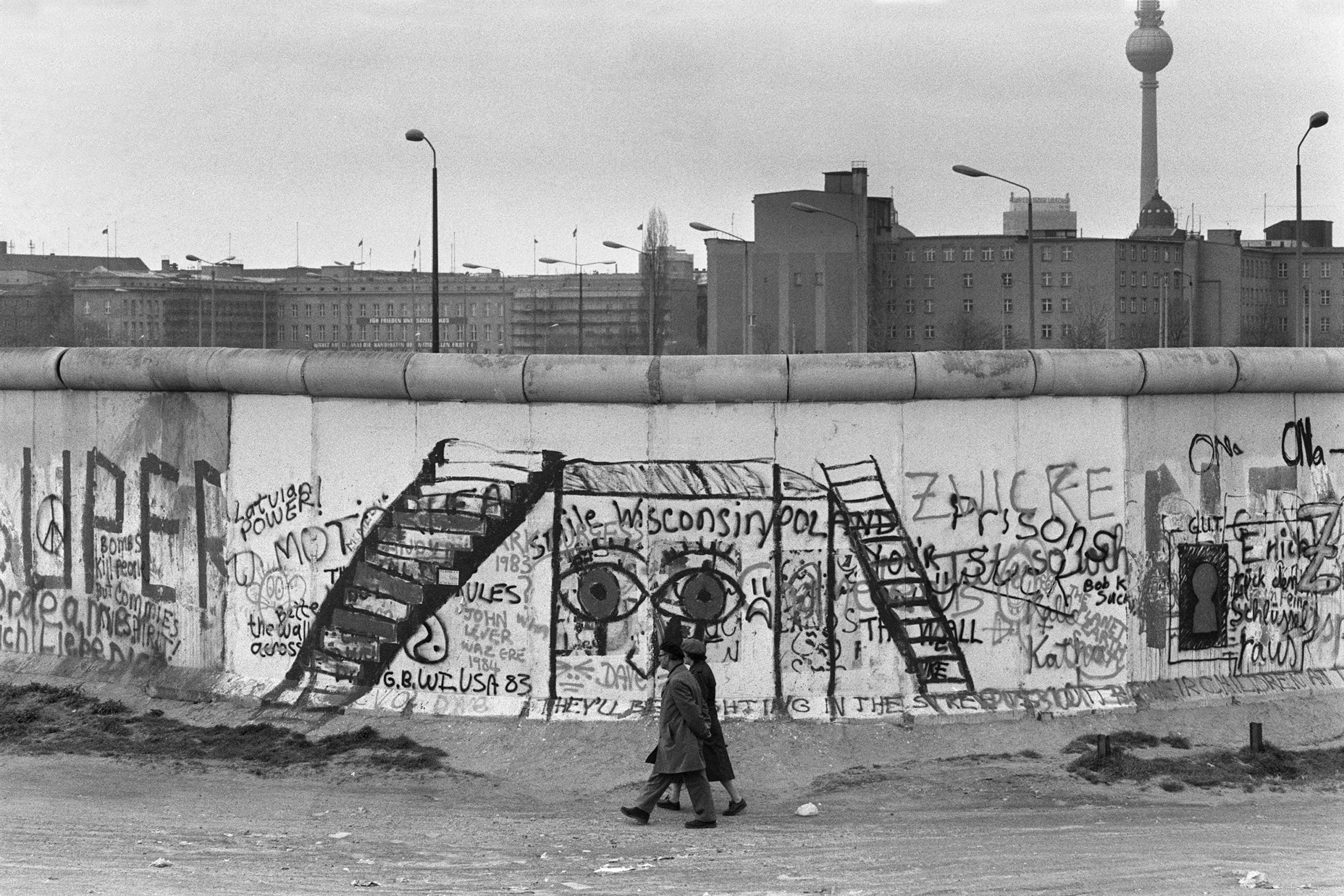
Ostenrik moved back to Indonesia in 1988, a year before the wall fell – but he enjoyed the reunification celebrations from afar and quickly made plans to return. “I was crying when I heard the news – I was in floods of tears,” he said. “And then I came up with the idea to buy some pieces of the Berlin Wall and bring it to Jakarta.”
Only two weeks after the wall had fallen, he had a ticket from Jakarta to Berlin. Focused on securing fragments of the wall that had once stood, but with little idea of how or where he could get his hands on the pieces, he flew over regardless.
“While on the airplane I couldn’t sleep, I was just making sketches and trying to build a concept of what I wanted to eventually do with them,” he said. Two days searching in the Yellow Pages brought him to the site of a company tasked with selling pieces of the walls to countries, institutions and museums to help raise funds for a rebuild of Berlin.
“A company was set up by the government to sell the walls to everywhere in the world and the money that would be raised would help the city,” explained Ostenrik. But the company’s buyers were normally other governments, large institutions with space spare and money to burn – not a young art student from Jakarta.
One piece of the wall had then just been sold for 100,000 Deutsche Mark (DM) (about $59,000 at the time) to a Japanese conglomerate. A similar fee quoted to Ostenrik would have been well over budget. “I told them: ‘Look, I was in West Berlin, I was a student, now I’m an artist – I have emotional binding to those walls,” explained Ostenrik. “I showed them my sketches and concept art for what I wanted to do for the project.”
For four pieces of the wall, he was charged 18,000 DM, and got them onboard a shipping container bound for Jakarta.
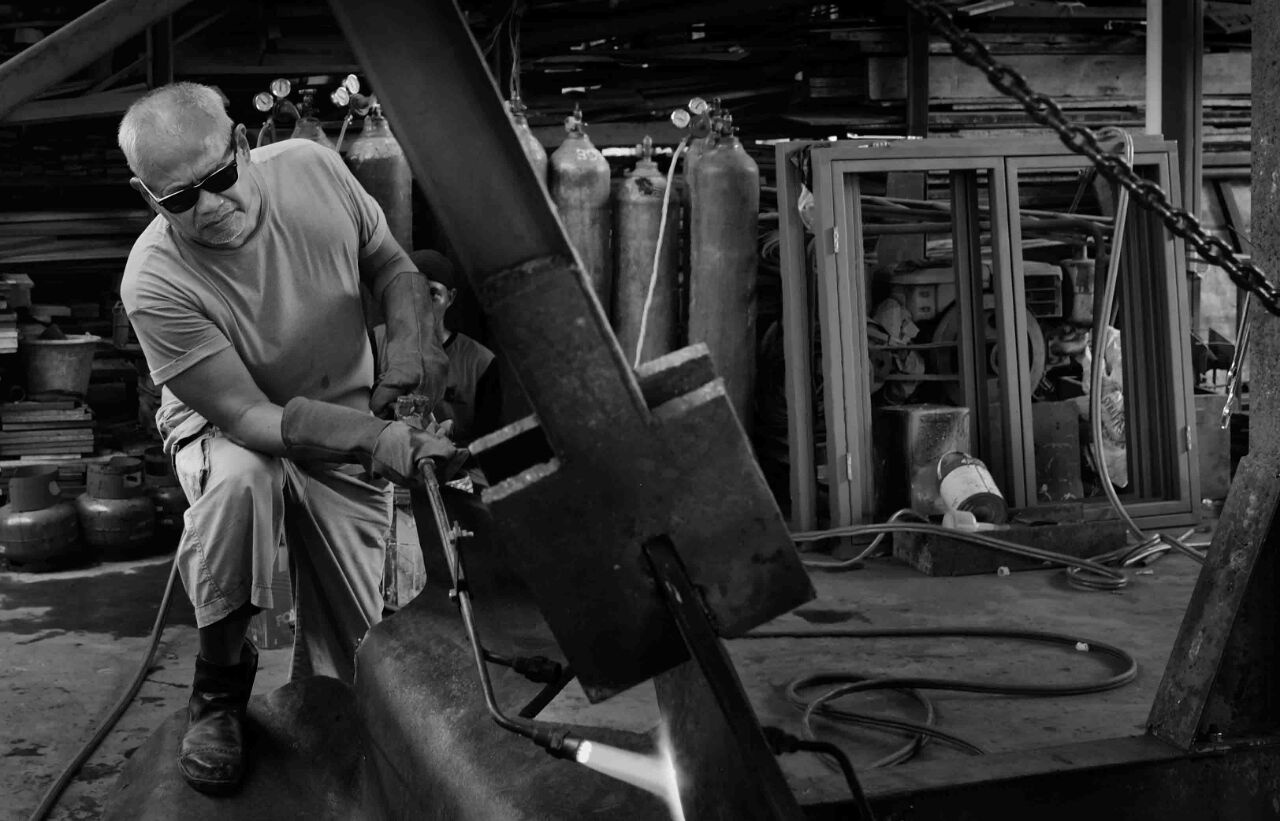
Ostenrik’s immediate plan was to design the installation to promote open mindedness, adorning the walls with different artwork inspired by both his life experiences and Indonesian history, to serve as a reminder of the invisible walls that still exist between peoples in societies.
Indonesia itself has its own complicated and violent history with communism. The Communist Party of Indonesia was the largest non-ruling communist party in the world before it was banned in March 1966 by General Suharto. In the months leading up to the ban, Indonesia witnessed large-scale purges, killings and unrest that targeted former members of the party and sympathisers. Up to a million were reported to have been killed in the period. Today, communism remains banned in Indonesia and purges a highly taboo topic.
We also have walls in Indonesia – we have 250 million people that want to be together in the same country, so we have to make an effort to transcend these walls
Ostenrik wanted his installation of the walls to signify the need to cooperate over conflict. But in 1990, with the pieces of the wall arriving in Jakarta, local authorities didn’t understand the significance of the walls, or the artist’s idea. “They didn’t understand my concept or the significance of it,” said Ostenrik. “Identity and identity politics was an issue then, in Indonesia.”
Even without the presence of physical barriers in the vast archipelago nation, Ostenrik says he saw similarities in Indonesia to formerly-divided Germany – in its language, culture and politics.
“We have more than 200 different nationalities and about 6000 languages. If I meet someone with an Indonesian passport, but he or she is from Lake Toba, from Sumartra, from east Java – that’s great, but there’s always boundaries between us all,” said Ostenrik. “I said to myself, ‘we also have walls here in Indonesia’ – we have 250 million people that want to be together in the same country, so we have to make an effort to transcend these walls.”
It would not be for almost three decades that Ostenrik’s idea would become reality, with a lack of support for the project meaning the four pieces of wall would lay dormant in his Jakarta art studio for 27 years. It was in 2017, when the city’s then governor Basuki Tjahaha Purnama ended up behind bars, that Ostenrik rushed to approach the new-governor Djarot Saiful Hidayat with the installation idea.
“They liked the concept we put forward and became very enthusiastic about the project,” said Ostenrik. A space was found in the newly redeveloped Kalijodo Park and on October 3, 2017 – German Unity Day – the installation finally saw light.
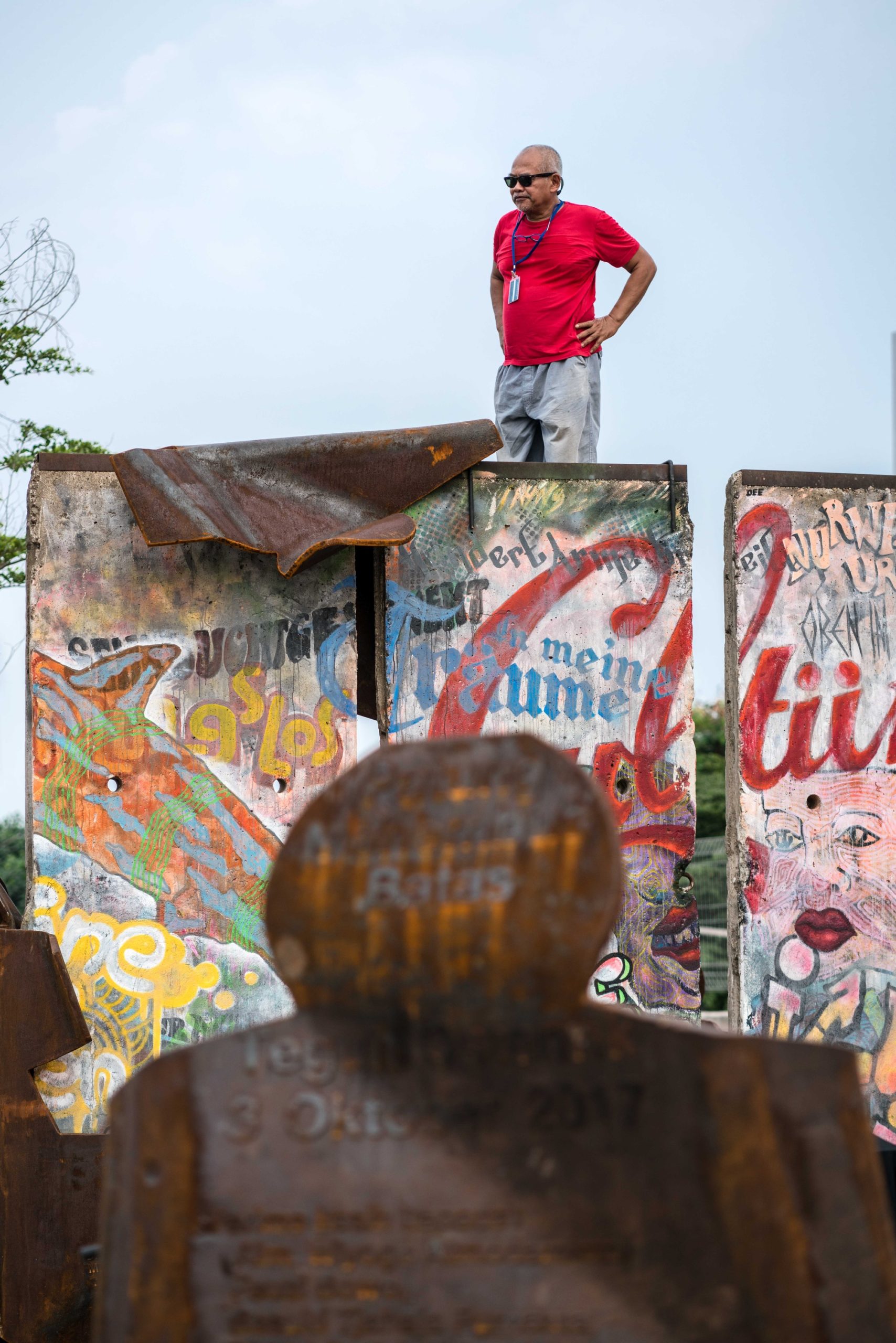
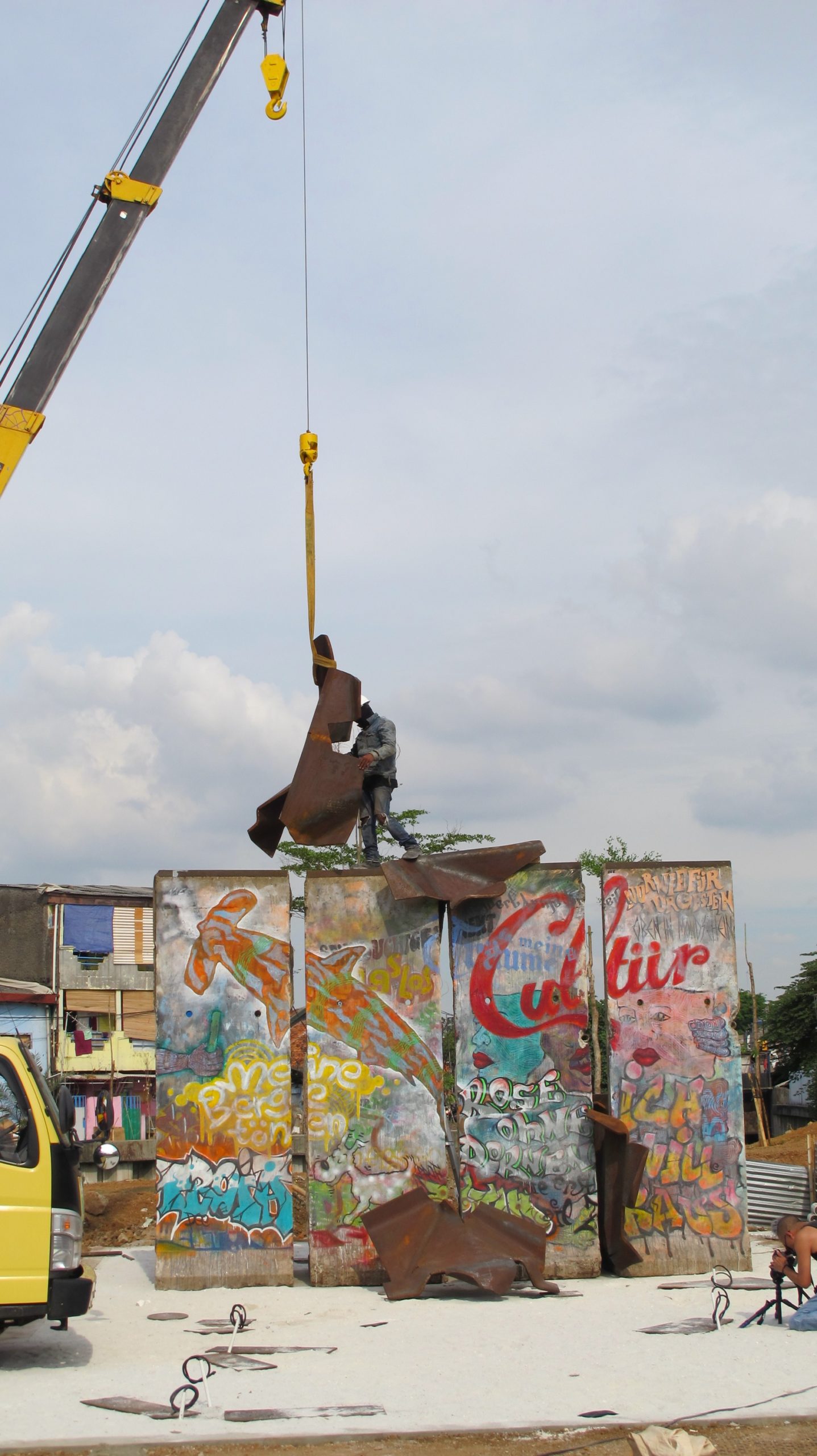
Ostenrik said local joggers still run by it today, skaters play in the nearby skate park, giving these ruins of a bygone era a new lease of life and meaning. Three years on from its installation, and 31 from their fall in Berlin, the physical walls erected by Ostenrik continue to remind those who look that walls still exist in Indonesian society.
“The Berlin walls are still there in Indonesia – the identity issue is still very strong,” said Ostenrik, stressing that this division can also be seen across the world.
The remedy? “Be open minded and tolerant,” Ostenrik said. “Sometimes we can’t bring those walls down, but we can make a real effort to transcend them.”
Those pieces of the Berlin Wall remain in Jakarta – a reminder of what has gone before, as well as a cautionary tale against what seem to be growing political schisms across the world today. Ostenrik is aware that his work represents just one piece of art, but hopes it can prompt a remembrance of the past that positively impacts the future.
“As an artist, I can only throw a stone in the water to make a ripple,” said Ostenrik. “But hopefully the installation reminds us that we can still love and understand each other without having to change who we are.”

